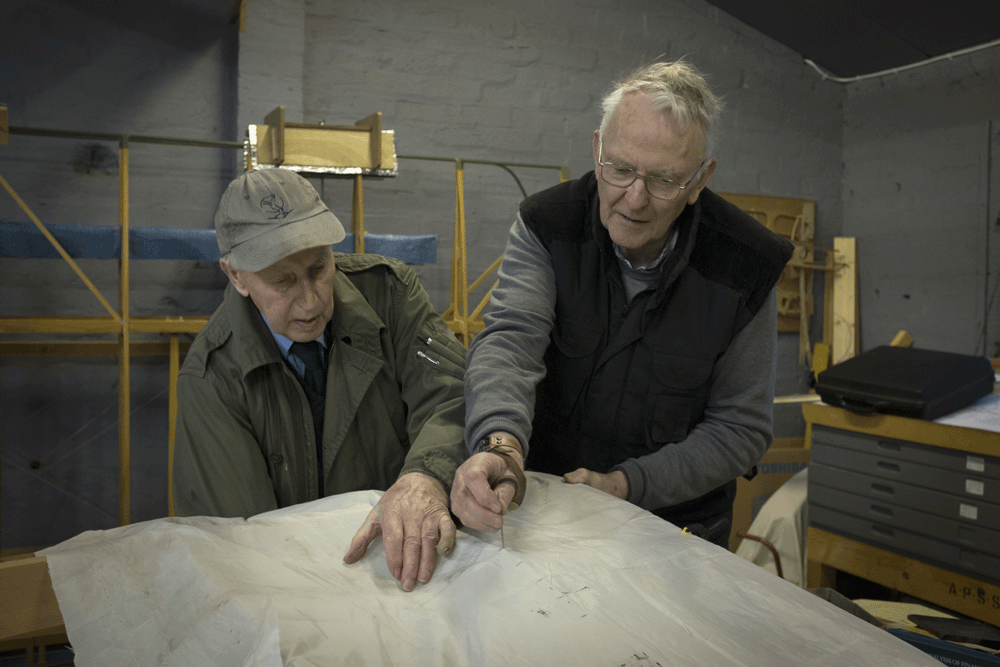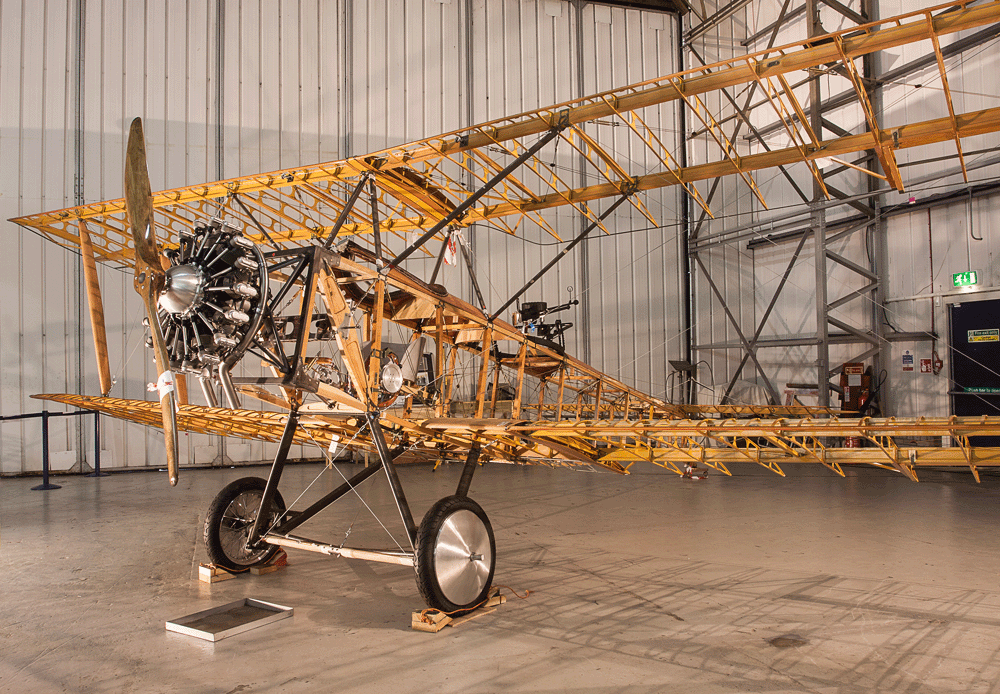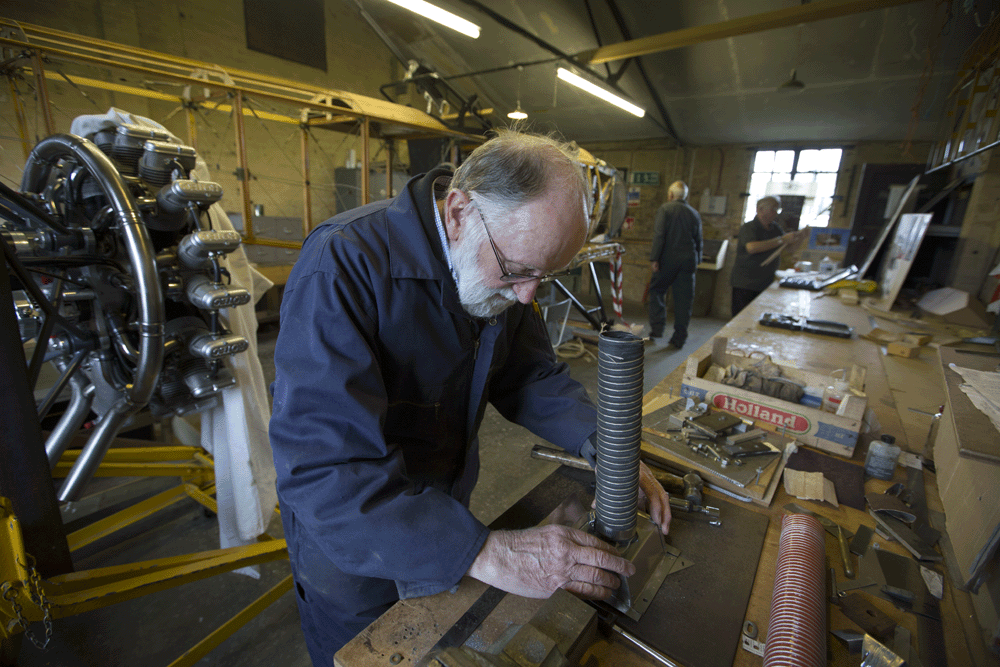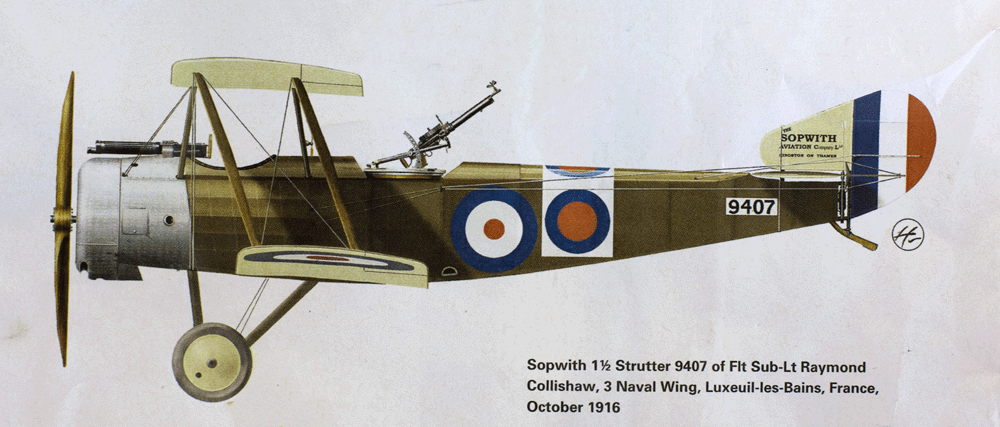AN elite squad of older men are learning how to sew so they can finish making a replica WW1 plane.

The group, aged between 68 and 93, are building a 1915 Sopwith 1 ½ Strutter aircraft from scratch ready for a centenary celebration in April.
The mammoth project has taken 14 years so far and the intrepid pensioners are now in a race against time to complete it.
But only a former surgeon in their ranks knows how to stitch.
The bi-plane needs to be covered with a tough outer-fabric and resin skin, which will also weather-proof it for the air.
All fabric must be sewn instead of glued to the wings and bodywork so the Strutter can withstand enormous elemental stresses when it eventually takes flight.

Giant 1ft (30cm) long needles are involved as well as smaller more detailed work.
Historically, construction of the planes was left to women as men fought on the front lines of Europe.
The members of the Aircraft Preservation Society Scotland (APSS) have built their own impressive version despite having no prior experience whatsoever.
Donations from the public have helped towards the £65,000 end cost.
But they admit they are finally stumped and have now turned to manuals and history books to figure out the techniques used for sewing the cover.

Construction is taking place East Fortune airfield in East Lothian, where the planes were originally tested. The team meet twice a week.
Retired orthopaedic surgeon John Guy, 77, said: “I learnt to sew and tie knots for my job.
“I can do this quite deftly because when a patient is lying with an open wound in front of you, time is of the essence.
“But our next sewing task is not quite the same and now we all have to find out more about how to proceed.
“Women really came into their own when it came to stitching the Strutter.
“They were defter and faster than men; their hands were smaller for the intricate work.
“This is going to be a new challenge for us and we are going to have to learn from instruction manuals and our aircraft inspector.”

Ken Sharp, 72, a former power station engineer also working on the project, said: “In the First World War women were the unsung heroes when it came to building these machines.
“We now need to find out how they did it.”
He added: “Maybe someone has a photograph of a grandparent or auntie which might help us to understand more clearly the processes used to complete the machine.”
The team are also looking for original Vickers and Lewis machine guns and cockpit instruments to make the replica as authentic as possible.

The Strutter was Britain’s answer to Germany’s deadly WW1 arsenal. It adapted army machine guns and went on to defend the coastline from Zeppelin attacks as well as engage in dog fights and reconnaissance trips in Europe.
Developed in 1915 by the Sopwith Aviation Company, almost 6000 were built for use in Britain and France.
Assistant Curator of Aviation at the National Museum of Flight Ian Brown said: “Very few original Sopwith 1½ Strutters survive today, so this replica is an interesting exploration of the construction of this aircraft.”
The team aim to have the Strutter flying in time to mark the 100th anniversary of the model’s maiden flight.

